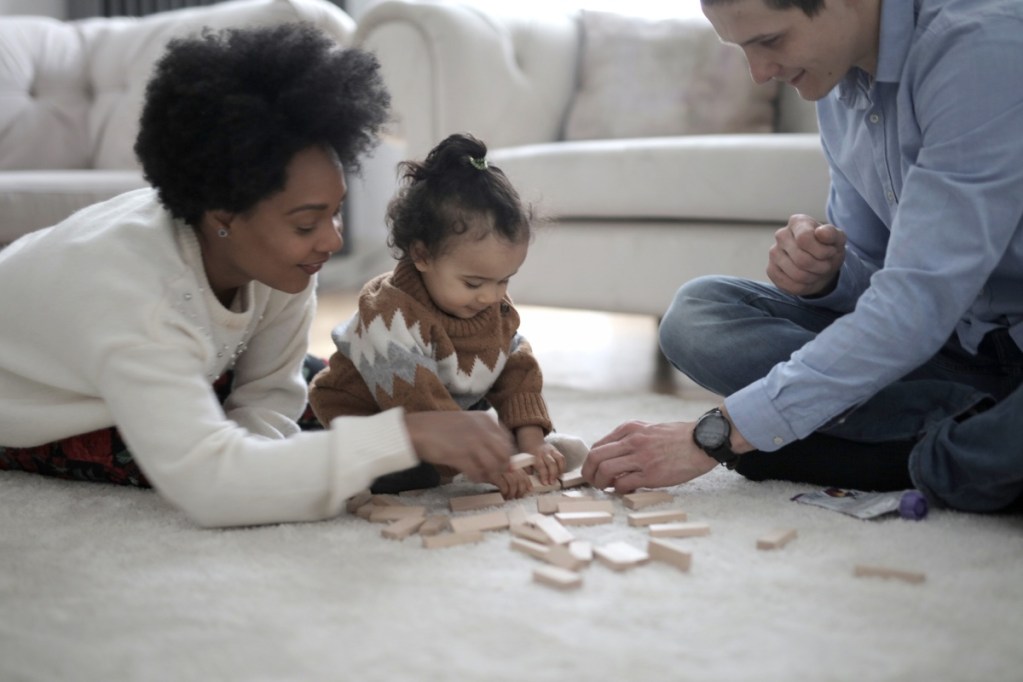Toddlers are full of energy and exceptionally curious. It can make these years fun for parents and they can start learning more and more about their little one’s unique personality and interests. Toddlers are learning, too. As they become stronger and more mobile, they become more independent — which is a natural part of growing up. However, it also makes teaching a toddler directions important.
Making a toddler follow directions can feel like a steep uphill climb. Think about it: Would you like being told that you must skip lunch with a friend to power through an unexpected work project? Pushback is not abnormal toddler behavior. You and your child can work together to overcome challenges.

Why it’s important to get a toddler to follow directions
You may send your toddler off to day care. An older toddler may go to nursery school. Though teachers are essential, and your child will learn from their experiences at day care or school, it’s still important for parents to work with their kiddos to follow directions because:
- They’ll better assimilate into school and other activities. Teaching a child to follow directions lays the foundation for your child to excel in school and extracurriculars, where they’ll have to adhere to guidelines, such as sitting quietly, walking in a line, and completing tests and projects.
- It will help with less stress at home. As your child learns to transition more seamlessly from one task to the next, such as watching Sesame Street to getting ready for school, life at home will feel a little smoother. Common toddler behavior issues, such as tantrums when the TV goes off, will happen less frequently.
- Your child will be safer. Learning practical precautions like crossing the street with a parent will help keep your child safe and sound.
How to get a toddler to follow directions
You can’t make a toddler follow directions — at least not willingly and happily. However, you can guide them with empathy and love. Here are some tips for teaching your child to follow directions and ways to overcome common toddler behavior issues.
Get on their level
Having a person three times your size towering over you and barking out directions is more likely to scare you than get you to buy in, right?
You can’t do much about the height difference, though your little one may seem to be growing like a weed. However, you can make it a nonfactor by getting on your child’s level. Squat down so you are at eye level with your child. This position allows you to look directly into your child’s eye and put your arm around them, which are two ways to help them focus on what you’re saying.
Your body language and eye contact are habits the child will hopefully learn to emulate as they communicate with people at school and eventually at work. In the shorter term, looking your toddler in the eye emphasizes secure attachment and communicates closeness, building trust.
Minimize distractions
Toddlers can become highly engaged in tasks and learning new skills, like playing in a pretend kitchen or putting together a puzzle. Sometimes, they’re not intentionally ignoring you — they’re just focused. Instead of telling your child that it’s time to go from another room in the house, go directly to them. Help minimize distractions.
To help the transition feel less jarring, you may squat next to them and say, “I’m going to put this puzzle aside for a moment so we can talk. I’ll give it back when we’re done.” Then, move the item and turn off any singing toys to keep your child’s focus on you.
Keep it simple
Toddlerhood is not the time for lectures. Though your child’s vocabulary is likely rapidly expanding, it’s not at an adult level yet, and neither is their focus. Keep directions simple like, “Please go get your shoes” and “Bring your milk cup to Mommy, please.”
Give them choices
Toddlers don’t have much control over their lives. Giving them choices about how they want to follow your directions empowers them and may cut down on challenges. For example, “We are going to leave the park soon. Do you want to honk the big train’s horn one more time, or should we head to the car now?”
This way, the child can have closure and the chance to do one more fun activity at the park if they want. Alternatively, they decided to leave with you.
Be calm but firm
It’s often not only what you say but how you say it. Tantrums and pushback are common toddler behavioral “issues,” but they can be highly triggering to parents. Breathe — by remaining calm and in control of yourself, because you’re teaching your child to self-regulate. A calm, firm voice teaches your child effective communication without scaring them.
Teaching a toddler to follow directions is challenging, but you can do so respectfully by remaining calm, getting on their level, and removing distractions. It’s best to avoid yelling, which can intimidate a child. No parent is perfect, so give yourself grace if you raise your voice — every day is a new opportunity to try again.
Though it’s common for children to push back on instructions, there’s a fine line between a “fully engaged toddler” and one who repeatedly doesn’t follow directions. The latter may be abnormal toddler behavior. If you’re concerned, speak with your child’s pediatrician about potential hearing difficulties or an evaluation for early intervention.




